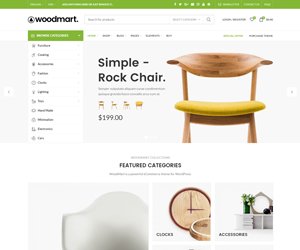Dallas Addiction Treatment Center
In the United States, 60.1% of individuals ages 12 and older use at least one substance (like tobacco, alcohol, or an illicit drug), according to the latest National Survey on Drug Use and Health. 87% of respondents indicated they were abstinent from drugs & alcohol after treatment. The Last House Sober Living for Men in Los Angeles, California is dedicated to providing a true path to long-term recovery for our clients. We embarked on a year-long study to measure the outcomes of our program. Strict enforcement of these rules ensures a stable environment where you can focus on your recovery without external pressures or temptations. If you have many outside commitments, or are ready to return to work, Teras can be a good entry point directly from treatment.
Q: What is a sober living house?
- Embracing these benefits, you’ll find that sober living homes offer much more than just a place to stay.
- For example, sober living houses may require residents to be home by a certain time or to go to work during the day.
- This growth has created different types of sober living homes, each designed to meet specific recovery needs and levels of independence.
- While living at a sober living facility, most individuals are required to work part-time or be in school.
- They’re able to handle life’s inevitable challenges, build strong relationships, and lead productive, fulfilling lives.
Having time to become comfortable in sobriety might be the single most important part of the Oxford House success story. Sober living houses can foster peer encouragement, camaraderie, character development, and accountability in residents. The outcomes of living in such an environment can include positive health, behavioral, and relationship changes. State and city pages provide detailed information about sober living homes in each location. Sober living homes are not just about providing a roof over your head; they foster a sense of belonging and mutual support. Here, you’ll find individuals at various stages of their recovery, each contributing to a collective reservoir of hope, strength, and encouragement.
The Benefits of Sober Living Homes
We are proud to offer a top of the line Sober Living home in Los Angeles, designed to provide a safe, supportive, and welcoming environment for individuals on their recovery journey. Our charming location creates a unique and tightly-knit sober community where residents can form meaningful connections and lasting friendships in sobriety. Sober living refers to a supportive living environment for individuals recovering from addiction. It bridges the gap between inpatient rehab facilities and a return to normal life. You’ll find these homes crucial if you’re in recovery, offering more than just a place to stay; they provide structure, support, and a community of peers who are also on their journey to sobriety. Recovering from addiction is hard, and having the https://ecosoberhouse.com/ right support can make a big difference.

How Does Sober Living Work?
Sober living homes, sometimes referred to as transitional living arrangements, halfway houses, or recovery residences, can be a step down from formal substance use treatment programs. These homes can offer an in-between option for individuals after they complete a treatment program and before they return to their homes and lives. This transition can provide continued support while residents learn to apply their newly learned self-reliant skills to real-life situations while they remain drug- or alcohol-free in a community environment. In particular, sober living and halfway houses can help somebody maintain recovery by providing a safe, sober environment.
Reduced Risk of Relapse
If you’ve made progress in treatment and want to keep that momentum going, sober living can offer the kind of steady support that makes a real difference. Maybe you’re ready to move forward, but you’re not sure your current environment will support the progress you’ve made. Maybe you just need a little more structure, a little more space to breathe, and a community that gets it.
- They’re often in recovery themselves, offering unique insights and empathy based on personal experiences.
- Residential drug and alcohol rehabs are just the start of the recovery journey.
- Some programs may have a set duration, often around three to six months, while others may be more flexible depending on individual progress.
- Even so, rent can vary greatly, with some rooms available from $500 up to $900 or more a month.
- Your sober living house may offer you the opportunity to work and either offset your rent or pay you in a more conventional way.
The call will help us obtain information like what alcohol and drug use is occurring, if there are underlying mental health issues, or if there are any pending legal issues. Start your recovery journey with peace of mind, knowing your care is covered. Level four sober homes are typically a branch of a larger organization with a hierarchy of authority. Resident stays are shorter at this level but with the most intense format.

Rehab provides clinical treatment, detox, and intensive therapy in a residential setting, while sober living provides safe housing and peer accountability after rehab. Many people transition from rehab to sober living to maintain structure during early recovery. Most sober living programs have a simple admissions process that includes a brief screening, proof of sobriety, and agreement to house rules. Availability can vary, so it’s best to apply early and confirm current openings. Daily life includes house meetings, curfew compliance, random drug testing, chores, and active participation in recovery groups such as AA, NA, or SMART Recovery.
Living in this type of home can aid sobriety and make it more likely that recovering addicts will sober home remain in recovery for the long term. A sober living facility is a residential accommodation where individuals recovering from substance use disorders can live in a structured, supportive and substance-free environment. The length of time that a person lives in a sober living facility varies based on their unique needs and progress on their recovery journey; however, the average length ranges from 6 months to several years. Some homes require you to commit to living in their facility for a certain length of time. Halfway houses in Fairfax County may not be solely for individuals recently out of rehab. While they often cater to those in early recovery, halfway houses can be beneficial for anyone seeking a supportive and structured environment to maintain their sobriety.
Our admissions team will work with you to explore the right payment options based on your needs, ensuring you get the best possible treatment. Eudaimonia Recovery Homes works with a number of private insurance providers in the United States. Recovery.com uses a standard procedure to make sure treatment provider marijuana addiction profiles on our site are current and complete. Ethos Structured Sober Living is an all male community in recovery located in the heart of West Los Angeles. Our primary purpose is to foster long-term sobriety through the cultivation of accountability, camaraderie, & character development.




